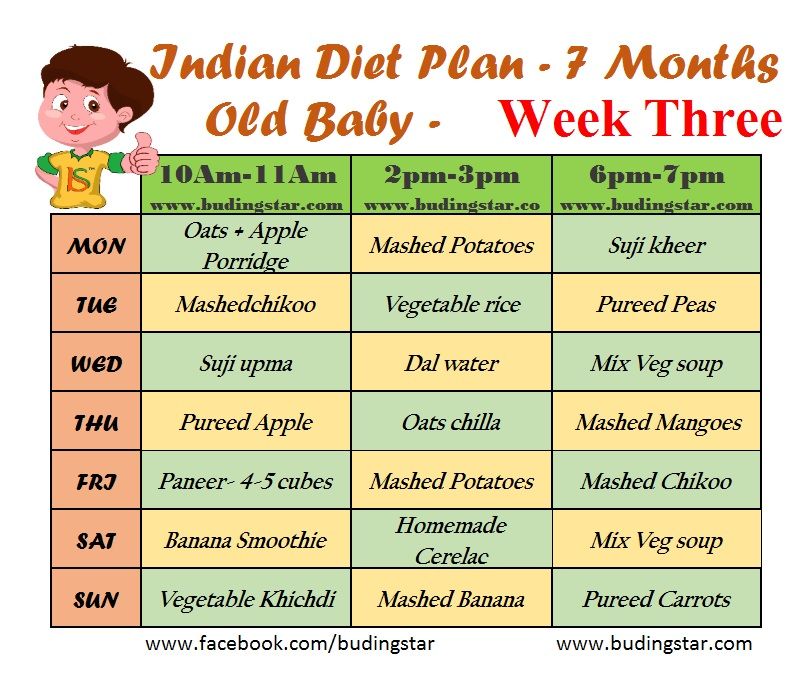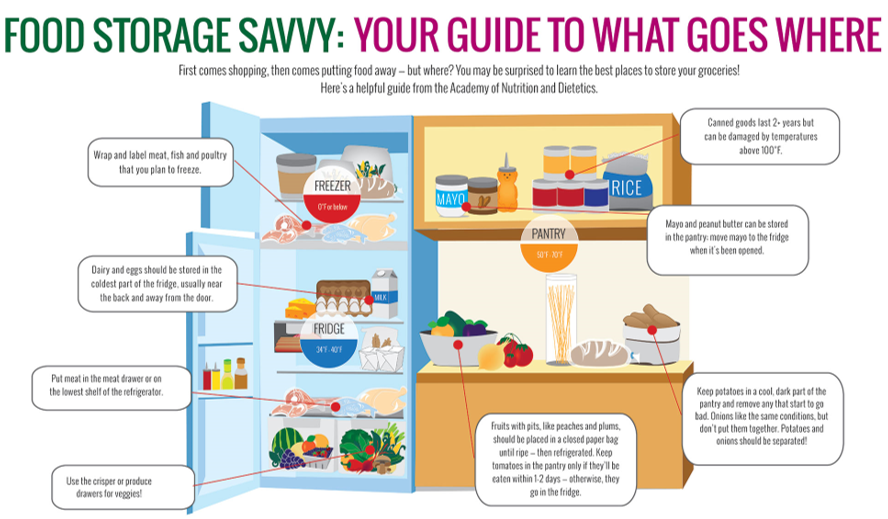Settle baby after night feeds
Baby sleep & settling: 3-6 months
Baby sleep and settling in the early months: what to expect
In the first 6 months of life, babies need to wake at night to feed. They have little tummies, so they need to feed often during the day and night to get enough food for growth and development.
Sometimes babies need you to comfort them so they feel calm, settled and ready for sleep. You can’t spoil your baby by responding to their settling needs – for example, by rocking, patting or speaking gently to them as they settle for sleep.
Later, when babies are developmentally ready, they still wake in the night, but they can sometimes resettle by themselves. This is what’s happening when babies ‘sleep through the night’.
For babies aged 3-6 months, these tips can help with baby sleep and settling:
- Emphasise the difference between night and day.
- Put your baby to bed drowsy but awake.
- Start a sleep routine.
These tips can also help your baby learn to settle by themselves when they’re developmentally ready.
Emphasising the difference between night and day
From 3-4 months of age, babies start to have their longest sleep at night. Here are some things you can do to help your baby get used to the idea that night is different from day and that night is a good time to sleep:
- During the night, keep the room dark or dimly lit and quiet.
- Use a dim light when you attend to your baby during the night.
- At night, respond to your baby’s cries quickly and settle or feed baby as soon as you can.
- Give night-time feeds in the bedroom. This helps to keep these feeds brief and make them different from daytime feeds.
- At night try to be soothing and quiet when you’re with your baby. Keep play for daytime.
Putting babies to bed drowsy but awake
Putting babies to bed drowsy but awake can help them settle at the start of the night.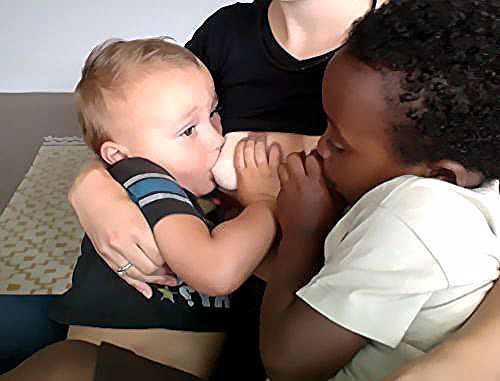 It can also make it easier for babies to settle back to sleep when they wake in the night.
It can also make it easier for babies to settle back to sleep when they wake in the night.
When babies fall asleep in their cots instead of being rocked or fed to sleep, they learn to associate falling asleep with being in bed. This can help them learn to settle for sleep in their own beds.
Also, from 3-4 months of age, babies can get upset if they wake somewhere different from where they fell asleep. So if your baby falls asleep in their cot, they’re less likely to be upset when they wake in their cot in the night. This helps them learn to self-soothe. Self-soothing is when your baby can calm down and go to sleep again by themselves. Babies who can self-soothe sleep for longer periods and have longer total sleep times at night.
If you put your baby to bed drowsy but awake, they might take a little while to go to sleep. They might even grizzle. This is OK. Just give your baby 1-2 minutes to settle down.
And as your baby gets older, you can also give them some time to settle when they wake or grizzle during the night.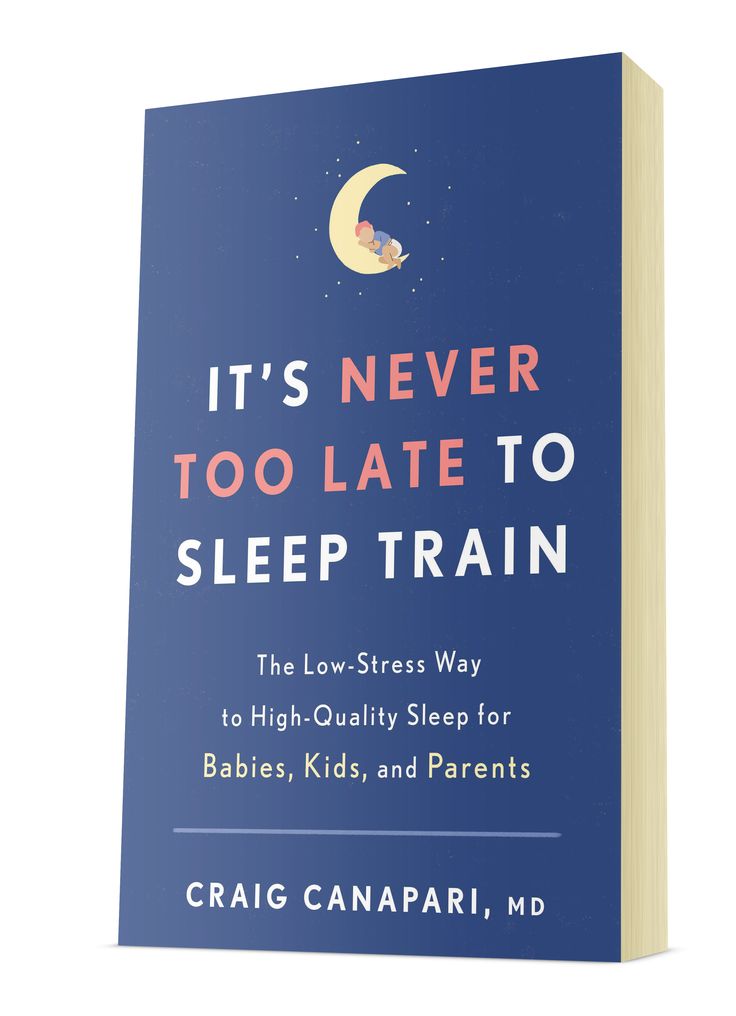 Your baby might re-settle without your help.
Your baby might re-settle without your help.
But if your baby starts crying at bedtime or when they wake in the night, it’s important to comfort your baby and help them settle.
Babies, children and adults all have sleep associations. Sleep associations help us go to sleep and go back to sleep when we wake in the night. Baby sleep associations might include being in the cot, being rocked, being patted and using a dummy. It’s completely fine to rock or feed your baby to sleep if this sleep association suits your baby and you. But if your baby gets upset when they wake in the night, it could be worth thinking about their sleep associations.
Starting a sleep routine
When it feels right for your baby and you, it can help to start doing things in a similar order each day – for example, feed, play, sleep.
When your baby wakes up during the day, a routine might look something like this:
- Offer your baby a feed.
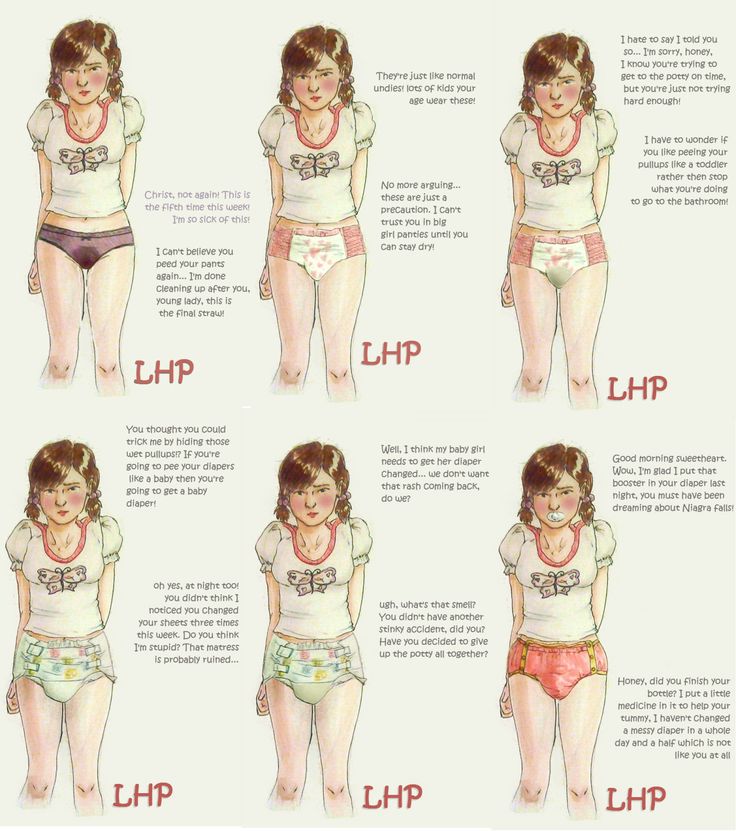
- Change baby’s nappy.
- Take time for talk, cuddles and play.
- Put baby back down for sleep when baby shows tired signs.
At night, it’s best to focus on settling your baby straight back to sleep rather than playing.
Safe sleeping practices can help you minimise the risk of sudden unexpected death in infancy (SUDI). These practices include sleeping your baby on their back, making sure your baby’s head is uncovered during sleep, and sharing a room with your baby for the first year of life, or at least for the first 6 months.
Top 10 Ways to Help Your Baby Settle to Sleep
Share
Every baby needs a little help to get to sleep sometimes. Here are 10 tips for settling your baby
Wouldn’t it be amazing to have a magic go-to-sleep fairy wand to wave over your bawling/sobbing/fractious/generally unsleepy baby?
But firstly, on a serious note, remember that waking up during the night is completely normal for young babies, and you shouldn’t feel pressure to try and get your baby to sleep for longer. In order to reduce the risk of sudden infant death syndrome (SIDS), safer sleep should be the priority instead of longer sleep. This may be difficult for exhausted parents, but it is vitally important that safer sleep is followed for all sleeps, day and night.
In order to reduce the risk of sudden infant death syndrome (SIDS), safer sleep should be the priority instead of longer sleep. This may be difficult for exhausted parents, but it is vitally important that safer sleep is followed for all sleeps, day and night.
Now, until someone invents that go-to-sleep fairy-wand (note to scientists: please make it a priority), we’ve got some tried and tested ways to help settle your baby to sleep so everyone in the house can get the rest they need.
How you do it depends on your baby’s age, so here are 10 tips for each age group:
0-3 MONTHS
Their sleep needs: Some newborn baby can sleep around 16-17 hours day (not necessarily at night, sadly), falling a bit to around 15 hours at three months but some sleep a fair bit less than that and that is normal too.
Feeding
You’ll still be feeding at night until at least 3-6 months old, so try to stay calm, accept the night wakings and respond to your baby’s demands for food quickly and quietly: that way she’ll hopefully drop off back to sleep quickly afterwards and so will you.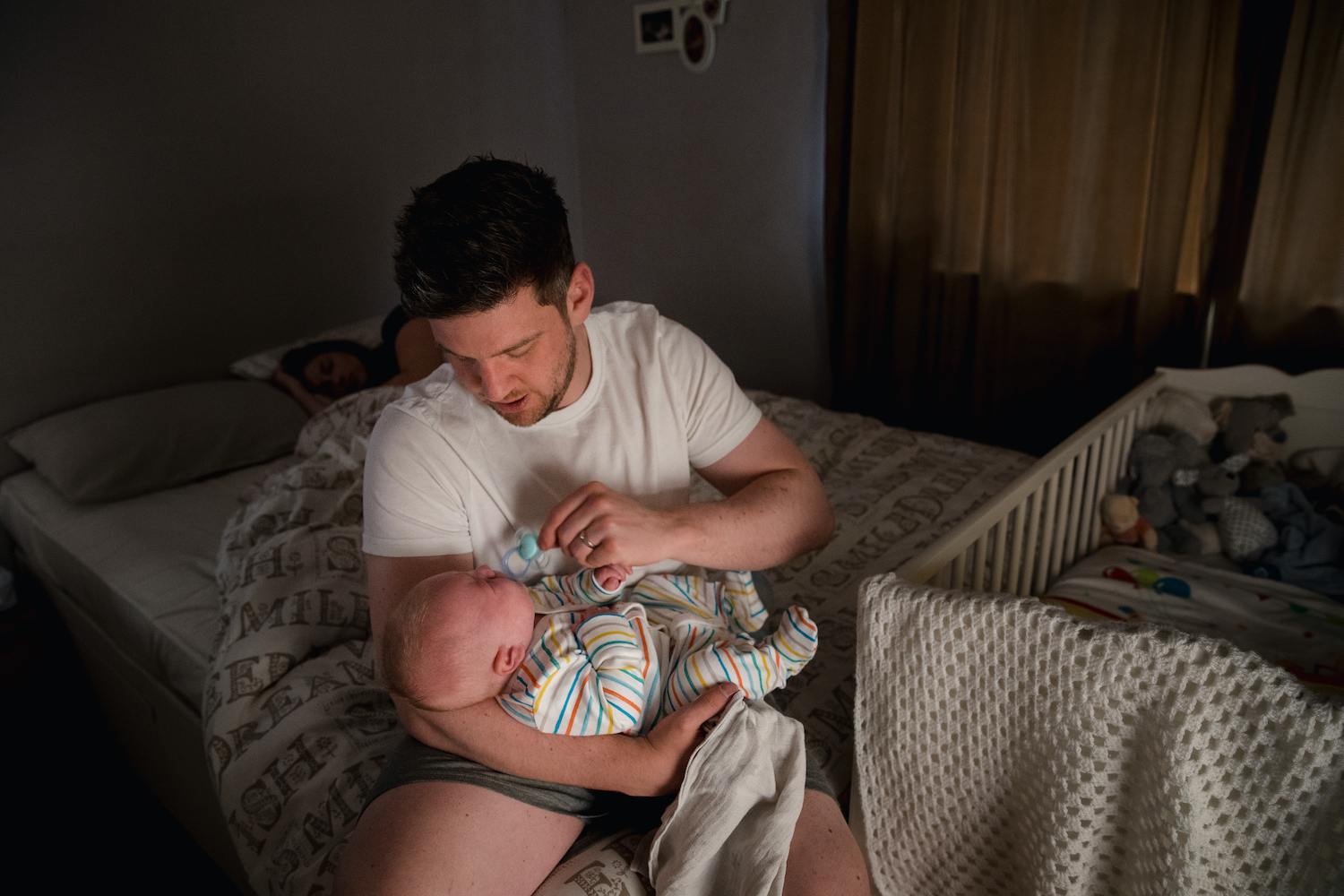 A baby who knows he’ll be fed when he asks for it will feel secure and will be more likely to be able to soothe himself to sleep later on. This bit’s tough on parents, but it won’t last forever.
A baby who knows he’ll be fed when he asks for it will feel secure and will be more likely to be able to soothe himself to sleep later on. This bit’s tough on parents, but it won’t last forever.
Turn detective
So you’ve fed them and they still won’t settle? Run through a mental checklist of what else might be wrong: wind/colic? (you can often tell by the high-pitched scream, their red face and drawn-up legs) Are they cold or hot? Do they need a nappy change?
Cuddling
Of course you’ll want to cuddle and comfort your crying baby. Some nights you won’t know why they can’t sleep despite your best efforts. But always try to put your baby back down in their Moses basket/cot when they’re drowsy but still awake so they learn to settle themselves. Keep stroking their cheek if you need to.
Try swaddling
Newborns can feel more secure when swaddled – either with a sheet or light blanket or using a shop-bought product. It works wonders for some babies, so it’s worth a go.
Stroke their nose
It sounds a bit mad, but a gentle stroking motion – downwards from between the eyes – can relax them and encourage them to close their eyes.
Watch for the yawns
Young babies can’t really stay awake for more than two hours: if you watch closely you’ll see them yawn and their eyes may glaze over. This is the time to take them out of a stimulating environment to a calmer one and let them sleep. If you miss the cues, they can get over-tired and seem hyper-alert when in fact they’re craving sleep.
Lay your baby on a muslin/blanket
Some babies hate transferring from your warm arms when feeding/cuddling to a cold moses basket or cot. To avoid this, put a muslin or blanket under them when feeding/cuddling and put it under them when you place them back in the cot: that way you’ve transferred some warmth and some of your reassuring smell.
Sort out blocked noses
A baby with a cold or who’s congested will have huge trouble sleeping (don’t we all?) You could ask your pharmacist about saline nasal drops, but in the meantime try slightly raising the head end of their cot either by putting a couple of books under the legs or with a small rolled up towel under the mattress. Don’t raise it too high, though, or your baby could slip down.
Don’t raise it too high, though, or your baby could slip down.
White noise
Some parents swear that putting on the washing machine, tumbler drier or vacuum cleaner near where their baby’s sleeping will send them into the land of nod – probably because it mimics the constant swooshy sound of life in the womb. If it seems rather impractical to move the tumble drier outside their bedroom you can also buy CDs/apps of white noise.
Rocking
This certainly works – either in your arms or in a rocking/bouncy chair – but beware! It might be useful for those nightmare nights where nothing seems to work, but it’s easy for a baby to get hooked on being rocked to sleep. Then they come to need it every night and suddenly you’ve created what health visitors call a ‘sleep association’. Ditto driving them round and round the supermarket car park at 2am…
3-6 MONTHS
Their sleep needs: Your baby will be getting more of their 14-16 hour daily sleep needs at night now (fingers crossed).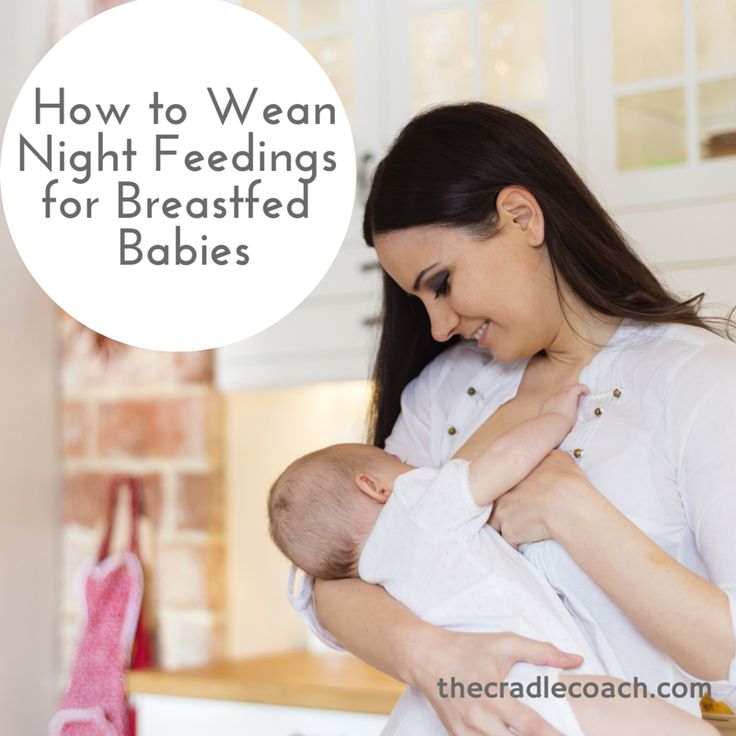 They’ll likely be having three daytime naps totalling three hours or so.
They’ll likely be having three daytime naps totalling three hours or so.
Feeding
You’ll probably still be doing at least one night feed until 6 months or older, but keep it quiet: no excitement, no lights on, no playing. Make as little eye contact as possible so they settle back to sleep quickly.
Advertisement
Put them down awake
If they’ve fallen asleep during their feed, it’s so tempting to lay them straight down and sprint out. But health visitors do advise rousing them slightly so they’re awake when you lay them to sleep. That way they know you’ve gone and won’t wake in a panic. It also means they are learning to go to sleep without you there.
Hand them a favourite toy/comforter
When they get to 6 months, as you lay them down in their cot, put down a soft toy they like next to them, or a blanket or muslin that smells of you (and them).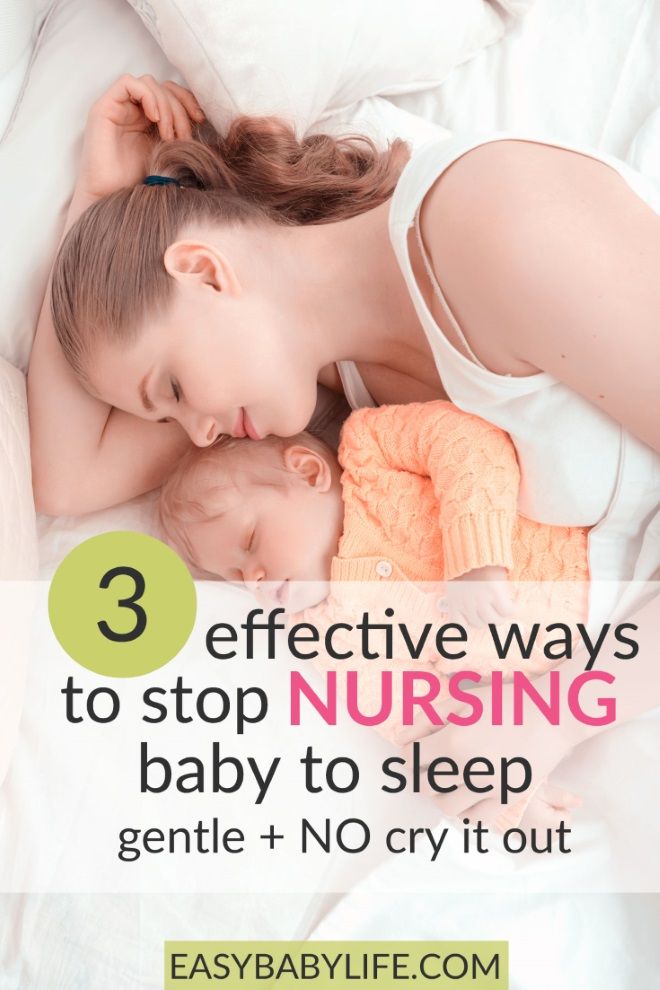 This really helps some babies to settle.
This really helps some babies to settle.
Wait before going to them
If you know they’re not hungry or hot/cold but they’re not settling, wait a few minutes before going into the room. Not ages – you don’t want to leave a baby in distress, but try waiting five or 10 minutes: It’s amazing how often they settle by themselves, and that’s a really important skill to learn.
Cuddling and rocking
There are going to be those nights where nothing seems to work apart from cuddling and/or rocking them to sleep. That’s life; everyone has those nights. But try not to make it a nightly habit to rock or cuddle them to sleep – that way they will expect it and don’t learn to settle by themselves.
Patting and shushing
Instead, if you’ve checked the obvious (hunger, nappy, temperature of baby/room) and they’re still not settling, try bending over the cot, patting them gently and shushing them quietly. Then retreat, and do it again if necessary. Leave longer gaps between each session until they (hopefully) settle.
Are they teething?
Some babies get their first teeth and four or five months, and they can cause real irritation and discomfort. Try massaging their face around the jawline and under the chin to soothe it, or try a teething gel. Some babies will only settle for a feed, though.
Try a baby sleeping bag
If your baby can’t seem to settle and they’re wriggling out of their covers, a baby sleeping bag can be a godsend. Watch out for the tog rating.
Try an earlier bedtime
You’d think a baby who’d had a busy day and not much sleep would sleep like the proverbial baby at night. But that’s so often not the case: just like us when we stay up too late, a baby can get a ‘second wind’. They get hyper and can’t settle.
Keep things the same
This is a great time to create a few bedtime habits. It signals to your baby that bedtime is coming, and it’s nearly sleep time. Sleep experts say it should last about half an hour – no more than 45 minutes – and take place calmly in the bedroom and bathroom. Don’t go into the playroom or living areas in case your baby thinks it’s time to play. What you do is up to you but it could include: warm bath, nappy change and pjs on, milk and story.
Don’t go into the playroom or living areas in case your baby thinks it’s time to play. What you do is up to you but it could include: warm bath, nappy change and pjs on, milk and story.
6-12 MONTHS
Their sleep needs: Your baby needs around 13-15 hours of sleep a day now, with around three naps totalling three hours at six months old, probably falling to two naps totalling 2-2 and a half hours at a year old.
Feeding
Every baby is different, but generally babies over about six months can sleep through the night without a feed – but of course that doesn’t mean they do! If you’re down to one night feed and think your baby could do without it, you could try gradually bringing it forward to before midnight to lengthen the number of hours he’s sleeping without food.
Put your baby down awake
Hopefully they'll be drowsy and relaxed but awake when you put them down to sleep. Trouble is, babies of this age are usually shattered by bedtime and often fall asleep feeding. To avoid this, try feeding slightly earlier and have a story last thing before putting your baby down.
To avoid this, try feeding slightly earlier and have a story last thing before putting your baby down.
Rocking
Try not get into the habit of rocking your baby to sleep every night if you can help it: it’s a great time for her to learn to settle herself to sleep without needing you right next to them.
Be consistent
Once you’ve got your 30-45-minute getting ready for bedtime sorted, keep it the same every night, at a similar time too, so you’re giving your baby plenty of cues that it’s time for sleep.
Separation anxiety
From about 8 months, babies often go through a phase of separation anxiety as they grapple with the concept that if you’re not there, it means you’ve gone! Try to stick to what you normally do. If they have trouble settling, always go back in because it will reassure them, but try not to pick them up. Instead gently stroke their face/pat her and say, ‘shhh, time for sleep. Night night’. Keep it quiet, calm and reassuring, gradually increasing the time between visits.
Growth spurts
Sometimes a baby who’s given up night feeds will suddenly start waking up in the night because they’re having a growth spurt. Obviously you are always going to feed a hungry baby! It’s a good time to think about giving more solid food during the day.
Teething
Babies of this age are in a major teething zone: often you’ll hear experts say it shouldn’t wake them up but mums will know the truth! Try massaging red gums with the end of a plastic spoon that’s been in the fridge, or use your (clean) finger.
View our range of teethers at Bountyboutique.co.uk
Standing up in the cot
Your baby is probably learning the exciting new skills of sitting and standing up – but hasn’t quite mastered how to lie down again afterwards. So their standing up, holding on to the bars of the cot for dear life and crying. Go in, settle the, back down quickly, kiss them good night and retreat fast. Keep doing it every time, while trying to stay calm. Remind yourself this is a short phase that will pass. During the day try playing games to teach them to get down from standing.
Remind yourself this is a short phase that will pass. During the day try playing games to teach them to get down from standing.
Time to move rooms?
If your baby has been in your bedroom until six months old, it might be a good moment to move her into his own room; it’s amazing how often adults can wake older babies up even just by turning over in bed.
Taking them into your bed
If you don’t normally co-sleep this is often the parental equivalent of pressing the nuclear button! Sleep experts will never advise it as your baby may come to expect to get into your bed every time they wake up – but don’t beat yourself up if you do it occasionally. Sometimes it’s a case of needs must if everyone in the house is going to get some rest on a really bad night.
Advertisement
Putting the child to sleep: useful tips and recommendations
Author, editor and medical expert - Muraeva Yulia Yurievna.
Views: 202 423
Last update date: 06/23/2022 G.
Average Reading time: 12 minutes
Content:
Rhythm of children's sleep
How to properly laid it out properly sleep baby
How to help your baby sleep
How to teach a child to sleep in his own crib?
Bedtime rituals
What are the bedtime rituals?
Sleep is an important part of life, so it must be regular and of high quality 1 . But often the first year of a child's life becomes a real test for parents. Even such a seemingly simple action as putting a newborn to sleep sometimes turns into a task of increased complexity.
The difficulty is that in infants, sleep is still being formed, and circadian rhythms differ from those to which parents are accustomed 2 .
Rhythms of baby sleep
Before birth, the alternation of sleep phases in the fetus is subject to circadian (daily) rhythms and fluctuations in the hormonal background of the expectant mother. After giving birth, it takes time for the child to mature its own regulatory system 2 .
After giving birth, it takes time for the child to mature its own regulatory system 2 .
A term newborn sleeps an average of 16-17 hours 2 , and the total duration of sleep is not affected by dark and daylight hours 3 .
Babies up to 2 months have 2 sleep phases 2.3 :
- Active sleep. Starts after falling asleep. This phase is important for the stimulation and development of the central nervous system. During active sleep, you can observe the baby's mobility, rapid eye movements and a weakening of reactions to external stimuli (light, sound, touch).
- Peaceful sleep. Follows the active phase. During restful sleep, the heart rate slows down, the movements of the eyeballs stop, and the baby stops moving his arms and legs.
Together these 2 phases form a cycle. Each cycle begins with active sleep followed by restful sleep. The duration of such a cycle is approximately 45-60 minutes 3 .
But the sleep-wake cycle lasts longer. For breastfed babies, it is approximately 1-3 hours, and for artificial babies, it is 2-5 hours 3 .
Gradually lengthening periods of wakefulness, and most of the sleep occurs at night 2 :
- By the end of 3 months of life, an uninterrupted night's sleep can be about 5 hours 3 .
- From 2 to 12 months, babies sleep 9-10 hours at night 3 , while daytime sleep is divided into 1-4 episodes that can last from 30 minutes to 2 hours 3 .
Sleep regularity and sleep disturbances can be assessed after 6 months, when the child develops circadian rhythms 3 .
Although the night sleep becomes longer, each cycle is still accompanied by micro-awakenings (wakings) 2.3 , after which the baby can fall asleep quickly enough. This is a short-term activation of the central nervous system, which must be distinguished from a full awakening 2 . It is good if at this moment the mother is nearby and helps the child fall asleep again.
It is good if at this moment the mother is nearby and helps the child fall asleep again.
Back to Contents
How to Put Your Baby to Sleep
The American Pediatrics Association has developed guidelines for safe sleep for babies. Below are some of them (the full list of recommendations can be found at the link) 4 :
- The best sleeping position is on your back.
- The mattress should be hard enough, and the crib should not be cluttered with things, blankets, pillows.
- No smoking in the nursery.
- If the child sleeps in a cool room, it is better to dress him warmly or put him in a special sleeping bag for babies. He should be warm, but not hot, so it is not recommended to wrap him with a blanket. And in order for the baby to breathe freely, in no case cover him with a blanket with his head.
Babies up to 12 months of age still need to feed at night, so sleeping in the same room with the mother may be necessary to optimize breastfeeding and closer contact 4 . Co-sleeping in the same room with parents does not mean that the child will sleep with them in the same bed, because it does not meet the safety requirements 4 .
Co-sleeping in the same room with parents does not mean that the child will sleep with them in the same bed, because it does not meet the safety requirements 4 .
Before putting your newborn to bed, also remember that:
- Tight swaddling is not recommended0036 4 . There are babies who find this soothing, but swaddling can interfere with the baby's breathing because the chest is compressed and the baby cannot take a deep breath. 4 . Tight swaddling also increases the risk of a lung infection and can aggravate hip dysplasia. Do not swaddle a baby who is already rolling over from his back to his stomach 4 .
- There is no consensus on the use of pacifiers. Some experts believe that they have a negative effect on breastfeeding and interfere with the formation of the correct bite. Other evidence suggests that pacifiers help reduce the risk of respiratory and cardiac problems in infants up to 12 months of age 4 .
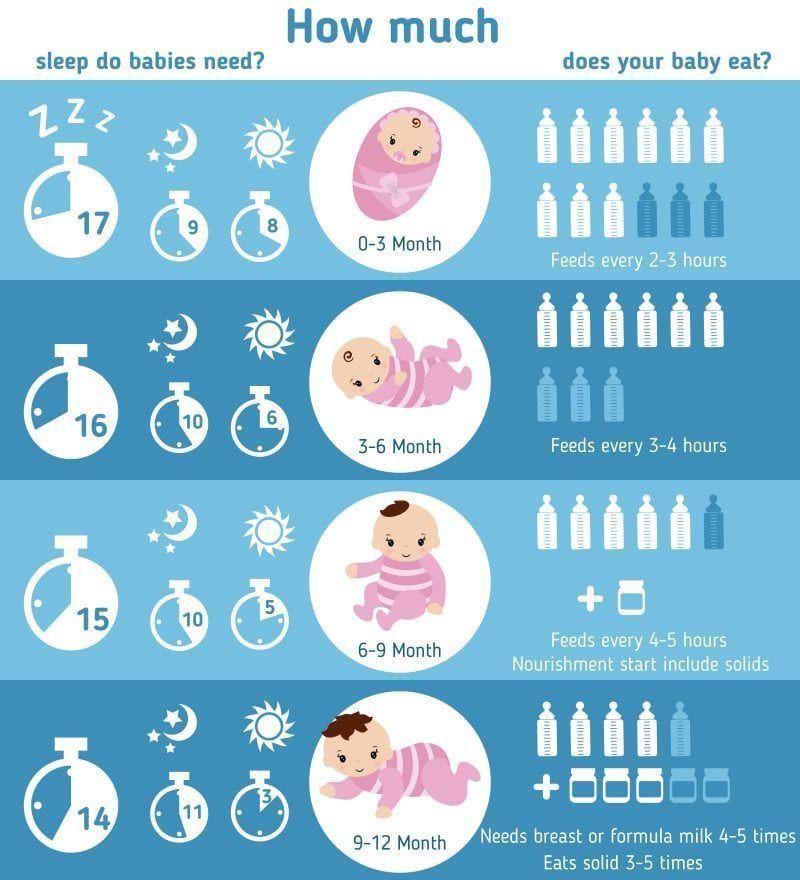
- Don't encourage falling asleep in your arms or while feeding. Older babies do not need to be allowed to fall asleep while watching a movie, after a set time, or in their parent's bed 4 .
Back to content
How to help your baby fall asleep
As the baby develops, fears, anxiety, anxiety may appear when he refuses to sleep separately from his parents and resists falling asleep 2 . The maturation of biological rhythms is facilitated by the environment of the child, the behavior of parents, compliance with the regimen and rules of sleep hygiene 3 .
To ensure quality rest and proper development, parents need to follow the recommendations. Specialists advise following these rules 4 :
- Put the baby to bed in the evening and wake up in the morning at about the same time, despite weekends and holidays 4 .
- Avoid physical activity before bed 4 .

- Limit activities in bed that are not related to falling asleep (playing, feeding), as this interferes with the baby's understanding of sleep 4 .
- Keep the bedroom comfortable - moderate temperature, low lighting, minimal noise, comfortable pajamas 4 .
- Form a laying ritual 5 .
- Follow the diet - the baby should not have any hunger or overeating. Before going to bed, you can feed him a little 5 .
- Keep an activity diary so that you can analyze and understand what interferes with your child's sleep 4 .
Back to Contents
How can I get my baby to sleep in his own crib?
There are various methods to help a child fall asleep on his own, without the help of parents. They are often used as a non-drug treatment for insomnia (sleep disorder) in young children aged 1 to 3 years 4 . Examples of such techniques are described below. Choosing the right one for your baby should be discussed with a baby sleep specialist.
One way to overcome sleep disorders is through behavioral therapy. It helps to change wrong associations and sleep patterns in a child 4.7 . In behavioral therapy, the abandonment method is used. With him, parents immediately leave the child in the crib and leave the nursery. However, they do not return when they hear his cries or call, giving him the opportunity to fall asleep on his own 4 . But psychologists do not recommend using this approach if the baby is not yet 6 months old and is breastfeeding 4 , as this may adversely affect the baby's condition.
In addition, the abandonment method is not suitable for all parents. For those who want to be near or calm a crying baby 4 experts recommend other methods - "check and hold" or "gradual repayment" 4.7 .
Back to Contents
"Checking and Holding"
When getting ready for bed, the parent spends some time with the child, then puts him to bed and leaves the room or goes to bed if she is in the nursery. At the same time, they do not approach the baby for 15-20 minutes and do not react to his crying or screaming. This period is called "hold" 7
At the same time, they do not approach the baby for 15-20 minutes and do not react to his crying or screaming. This period is called "hold" 7
When the 20 minutes have elapsed, the parent goes to the child, straightens his bed and returns to himself. This part is called checking 7 .
It is very important not to take him out of the crib and feed him when he wakes up. The exception is children who require night feedings for age or medical reasons. In all other cases, the parent simply comes to the crib for a short time to check, and then leaves again for a 15-20 minute “hold” 7 .
Gradually - over several nights - increase the "hold" interval to 30 minutes 7 .
Up to content
Gradual repayment
This technique is designed to “repay” the child's protests and manipulations 7 . There are 2 options for "gradual repayment" - with and without the presence of a parent 4 .
The classic option is to leave the baby alone in the bedroom for a certain amount of time, gradually accustoming him to fall asleep on his own. Unlike the “check and hold” method, the child can be calmed down. But you need to return to his bed not at the first call, but after a certain time. After the child calms down, you need to leave again, increasing the intervals when he tries to fall asleep without you 7 . This option is suitable for babies over 6 months old 4 .
Until the age of six months, use the “gradual repayment” method in the presence of a parent. It is carried out in stages 4 :
- The parent puts the baby to bed and sits next to it. If the bed is large, you can lie down next to the child.
- On subsequent nights, mom or dad still stays close to the baby, but gradually reduces the number of touches, communicates less with him, showing him that they are busy with something, for example, reading or cleaning the room.

- When putting the child to bed, the parent does not lie down next to him, but sits on a chair not far from the bed, about 5 meters from it, continuing to sit until the baby falls asleep.
- In the next step, the distance between the bed and the chair is increased by gradually moving it away.
- A little later you can leave the nursery for a while, but be sure to return before the baby cries.
If the child wakes up, repeat the same steps that you perform at this stage of the procedure. The stages can be stretched over several days so that the baby has time to get used to each 4 .
Up to contents
Bedding rituals
Forming a bedding ritual is considered to be an effective method 4 . It can complement the "repayment" technique, but sometimes it works quite well on its own. Suitable for all ages, but the earlier it is started, the less likely babies are to develop sleep problems - they fall asleep faster and sleep longer 4 .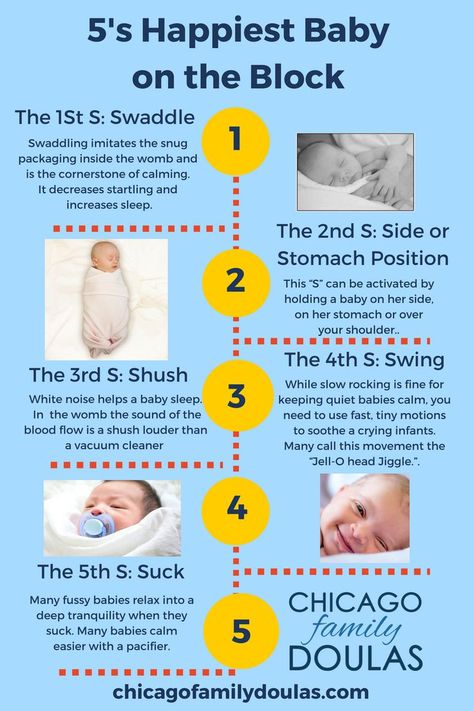
The ritual begins at the moment of the child's drowsiness. Before you put the baby to sleep, you need to perform a number of actions. They should be predictable, regular, relaxing and positive. The total duration of the ritual is 20-45 minutes 4 . If it was not possible to meet the set time, most likely, you need to shift the ritual to another time and wait for drowsiness. It can manifest itself as loss of interest in surrounding toys and people, reddening of the eyelids, rubbing of the eyes, yawning 4 .
Back to Contents
What are the rituals for falling asleep?
Experts recommend preparing for sleep, which consists of consecutive, daily repeated actions, the so-called routines 5 . They help to speed up falling asleep, increase the quality and duration of sleep, reduce the number of night awakenings 5 .
The most typical nightly rituals 6 :
- Bathing in warm water with your favorite foam or bath product, light massage.

- Soothing sounds - "white noise". This is a monotonous noise that does not carry a semantic load, soothes and helps to forget, for example, flowing water, a metronome, ticking clocks or recordings of nature sounds.
- Lullabies and fairy tales.
- Wishes for "good night", "sweet dreams" or other phrases that are said only before going to bed.
Sleep experts recommend a three-step ritual that includes bathing, massage and quiet time in the crib 8 .
- Bath foam can be used during bathing. For babies from 6 months, JOHNSON’S ® Baby Bath Foam "Before Bed" is suitable. It has a soothing scent to help your baby get ready for bed 8 .
- Immediately after a warm bath, a milk can be applied to the skin, such as JOHNSON’S ® Bedtime Milk 8 , for children over 6 months of age, by lightly stroking the skin. Such a massage will calm the baby even more and prepare him for sleep, especially thanks to the pleasant smell of milk 8 .
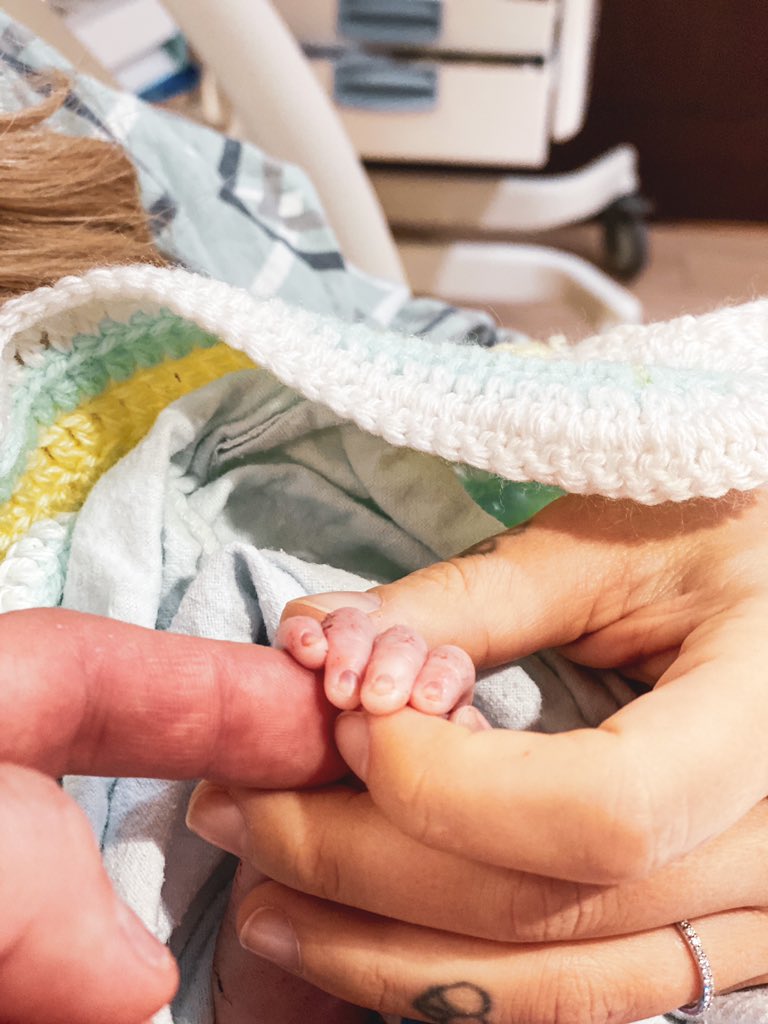
- At the third stage, you need to change the child into pajamas, read a bedtime story or sing a lullaby 4,8 .
As a rule, a few days are enough to form an association between the evening routine and falling asleep 4 .
As you can see, pediatricians and psychologists have developed various methods for healthy children's sleep and fast falling asleep. But you need to use them, taking into account the age of the child, his habits and characteristics of the nervous system. The task of parents is to organize the baby’s daily routine and prepare him for sleep, calming and creating positive associations with the process of falling asleep. With the correct implementation of the recommendations of a specialist, the child will gradually learn to fall asleep independently and faster, will sleep longer and sounder.
You may also be interested in:
Traveling with your baby
Baby's Skin Care Guide
Back to Contents
The information in this article is for guidance only and does not replace professional medical advice. For diagnosis and treatment, contact a qualified specialist.
For diagnosis and treatment, contact a qualified specialist.
References:
- E.S. Sakharova. What worries the baby? Pediatric pharmacology, 2010, volume 7, No. 2, pp. 143-148.
- I.A. Kelmanson. Formation of the state of sleep in ontogeny and the problems arising from this. Neurology and psychiatry. Special issue "Sleep and its disorders-5". Effective pharmacotherapy, 2017, No. 35, p.4-13
- M.G.Poluektov, P.V.pchelina. Sleep in children: from physiology to pathology. Medical Council, 2017, No. 9, pp. 98-103.
- P.V.Pchelina. M.G.Poluektov. How to treat insomnia in early childhood. Neurology and psychiatry. Special issue "Sleep and its disorders-4". Effective pharmacotherapy, 2016, No. 19, pp.52-60.
- Jodi A. Mindell, PhD; Lorena S. Telofski, BA; Benjamin Wiegand, PhD; Ellen S. Kurtz, PhD. A Nightly Bedtime Routine: Impact on Sleep in Young Children and Maternal Mood. (The Nightly Sleep Schedule: Effects on Young Children's Sleep and Maternal Mood) SLEEP (Sleep), Vol.
 32, no. 5, 2009. pp. 599-607.
32, no. 5, 2009. pp. 599-607. - E.A. Korabelnikova. Treatment and prevention of insomnia in young children. Russian Psychiatric Journal, 2012, No. 3, pp. 62-70.
- M.G. Poluektov Sleep disorders in childhood: causes and modern therapy // Effective pharmacotherapy, Neurology and psychiatry. 1/2012
- Mindell J, Lorena S, Telofsky BA et al. Nightly sleep routine: effects on young children's sleep and maternal mood. Sleep. 2009; 23:599–606.
Back to Contents
How to sleep with a baby
to establish a general routine
What do most women do when their baby falls asleep? Someone rushes to cook, someone begins to hastily clean the apartment, iron, wash - there are always plenty of things to do in the family. But in vain. You can do household chores even when the baby is awake, but he definitely won’t let you sleep. Therefore, if a son or daughter falls asleep, drop everything and go to bed with the child.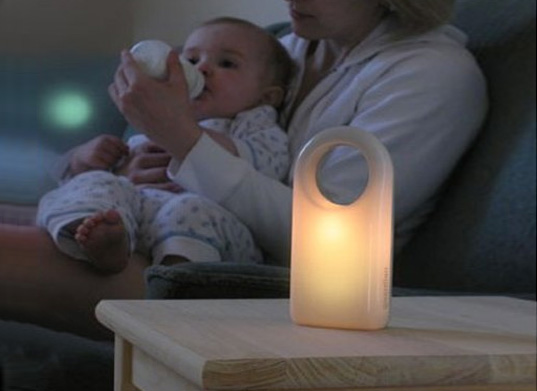 There is no perfect order or dinner is not prepared? You can do all this later, when you rest, and, by the way, you will most likely spend much less time and effort. Therefore, the first rule of mom's regimen: sleep when the baby sleeps. To feel normal, a woman (especially a nursing mother) must sleep both at night and during the day. So adjust the general regimen of the day: you can adapt to the child’s sleep, or, on the contrary, you can adjust the child’s sleep to your routine (although this will be more difficult to do).
There is no perfect order or dinner is not prepared? You can do all this later, when you rest, and, by the way, you will most likely spend much less time and effort. Therefore, the first rule of mom's regimen: sleep when the baby sleeps. To feel normal, a woman (especially a nursing mother) must sleep both at night and during the day. So adjust the general regimen of the day: you can adapt to the child’s sleep, or, on the contrary, you can adjust the child’s sleep to your routine (although this will be more difficult to do).
accept help
As often as possible, use volunteers to babysit, walk with your child or just feed him. And here the help of the husband, grandparents will be invaluable. Do not trust the baby mother-in-law? Do you think that dad will not be able to entertain the baby for a couple of hours? Worried that grandpa will get lost with the baby while strolling around the house? In vain. Your loved ones are adults, they wish both you and the baby only the best and are unlikely to harm him in any way.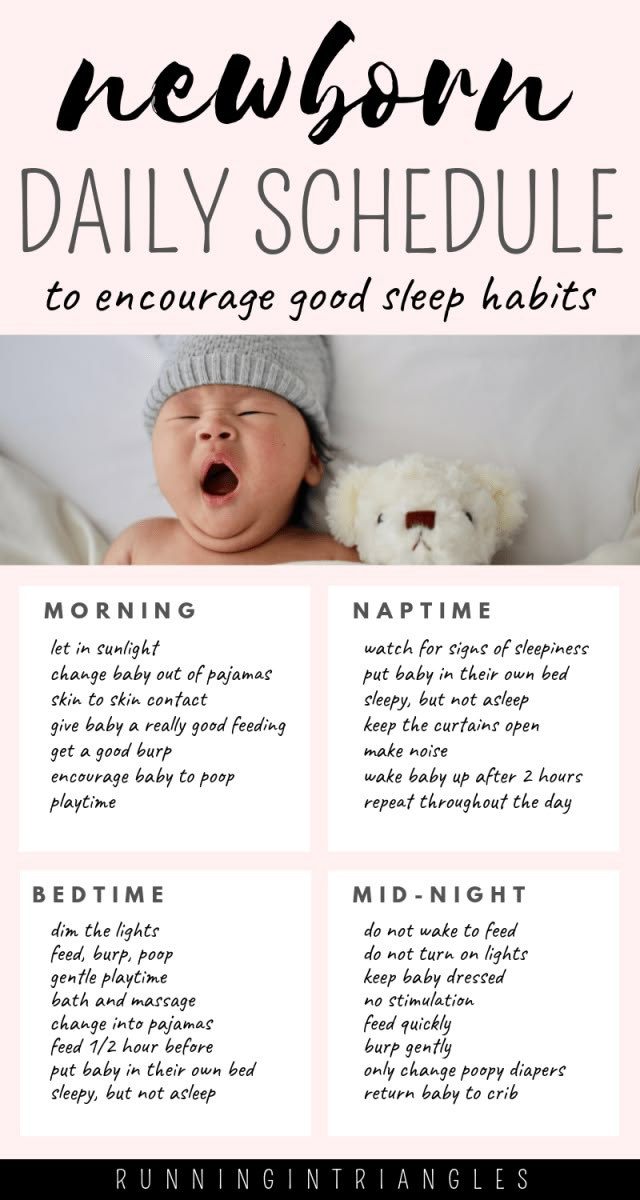 At most, a diaper is buttoned crookedly, an extra blouse is put on the baby, or they give him the wrong nipple.
At most, a diaper is buttoned crookedly, an extra blouse is put on the baby, or they give him the wrong nipple.
If possible, make arrangements with your family so that they can babysit at least two or three times a week, giving you a couple of hours to sleep and rest. By the way, for this you can invite a nanny. And again - no household chores at this time, only - sleep!
sleeping with the baby
Co-sleeping has many advantages: the mother doesn't have to get up, wake up, go to the crib, get the baby out of it. She can feed the baby and at the same time almost never wake up: after all, the baby will find the breast on its own. Yes, and many children sleep only with their parents - in order to fall asleep, some babies need to feel the familiar smell and warmth of a loved one. This method has both its supporters and opponents, but in any case, if you choose to sleep together, you need to ensure the safety of the child.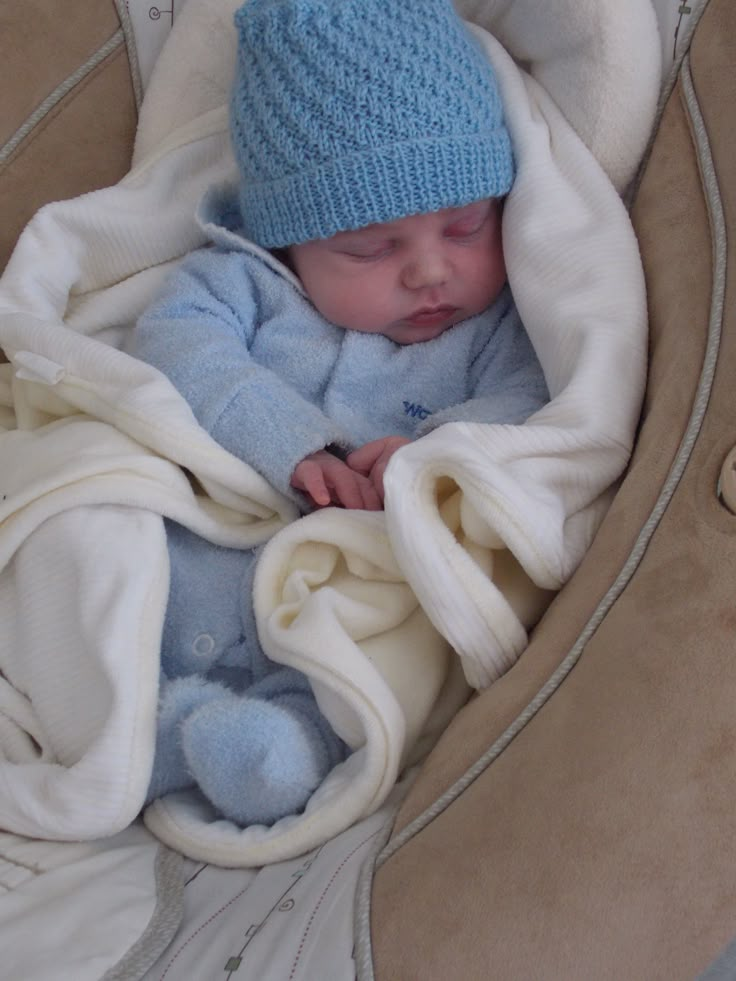 You can not put the child on the edge of the bed - he can turn around and fall to the floor; you can not lay it next to the parent pillow - the baby may turn unsuccessfully and his breathing will be disturbed.
You can not put the child on the edge of the bed - he can turn around and fall to the floor; you can not lay it next to the parent pillow - the baby may turn unsuccessfully and his breathing will be disturbed.
And it's best not to put the baby in the same bed with adults, but simply move the crib to the parent's bed, after removing the side rail from it (today there are even special cribs for sleeping together). So the child will feel the closeness of mom and dad, and parents will sleep peacefully, without worrying about his safety.
“Stock up” with sleep
Scientists have established that lack of sleep or insomnia is fully compensated by a full rash preceding it (or subsequent after it). And if so, then you can “stock up” on sleep. A couple of times a week (well, or one for sure) you need to arrange a day for yourself when the dream lasts 8-9hours per day. Here again, relatives or a nanny will come to the rescue.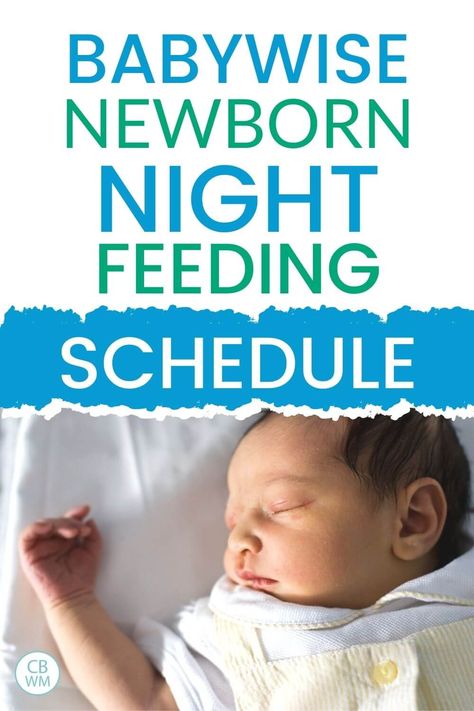 You can select once a week when you sleep all night, and dad gets up at night for the baby. True, this is convenient when the child is bottle-fed or at least agrees to drink expressed mother's milk from a bottle at night. If this is not possible, then you need to agree with your husband that, for example, on the weekend he takes the child and works with him for a couple of morning hours, and you fill up the missing time. Or let your grandmother (nanny) come in the morning, who will also let you make up for a night's sleep.
You can select once a week when you sleep all night, and dad gets up at night for the baby. True, this is convenient when the child is bottle-fed or at least agrees to drink expressed mother's milk from a bottle at night. If this is not possible, then you need to agree with your husband that, for example, on the weekend he takes the child and works with him for a couple of morning hours, and you fill up the missing time. Or let your grandmother (nanny) come in the morning, who will also let you make up for a night's sleep.
go to bed together at night
Usually, after putting her baby to sleep, the mother either rushes to finish the day's work, or tries to find time for herself (surf the Internet, read a book, watch TV, get a manicure). But it is the first three to four hours of sleep at night that children sleep best. Take note of this and go to bed at night at the same time as your baby. Otherwise, you have not yet had time to fall asleep (or just fell asleep), as the baby woke up for night feeding or just like that.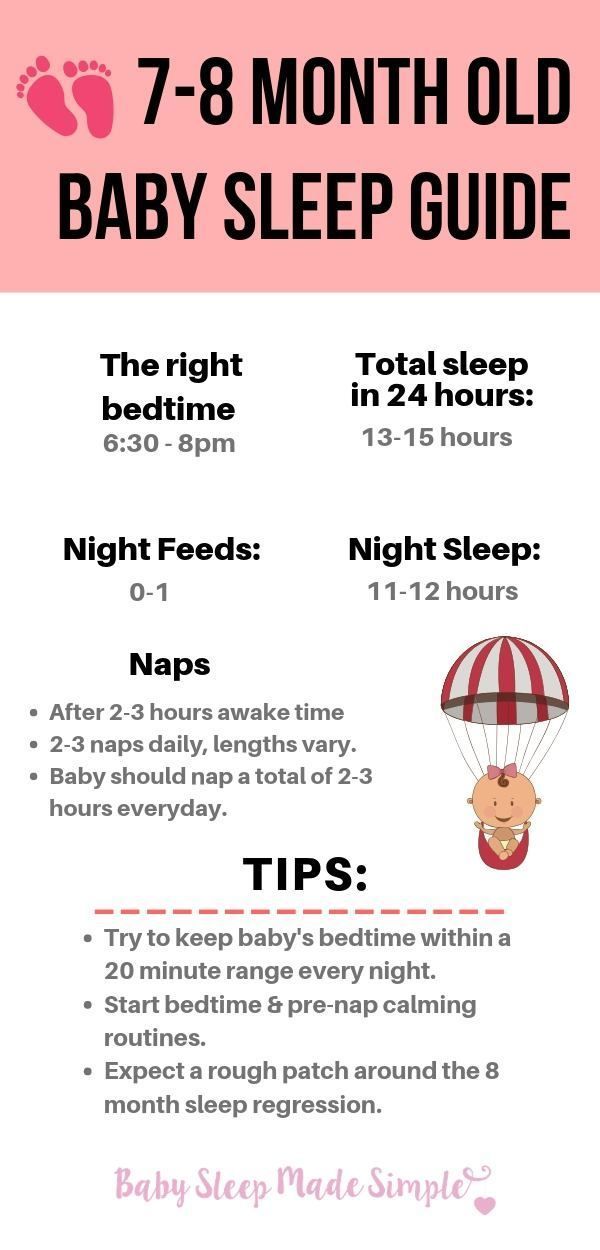 As a result, you will get not only a shortened night's sleep, but for sure at night the baby will wake up a couple more times and interrupt it.
As a result, you will get not only a shortened night's sleep, but for sure at night the baby will wake up a couple more times and interrupt it.
put the child to bed early
As a rule, an adult who goes to bed early wakes up earlier. But in children there is no such pattern. Therefore, do not be afraid that today, having fallen asleep before 9 pm, tomorrow the baby will wake you up at dawn. On the contrary, the later the child falls asleep, the worse and more restless he sleeps. And just early laying gives a more complete and prolonged night's sleep. And this is exactly what a tired mom needs! But in order to establish such a daily routine, all family members will have to try. But then it becomes much easier for them.
Try to improve your routine and sleep more, and the whole family will feel much better. Even with a small child, it is possible not to feel sleep deprivation. Try it and see for yourself.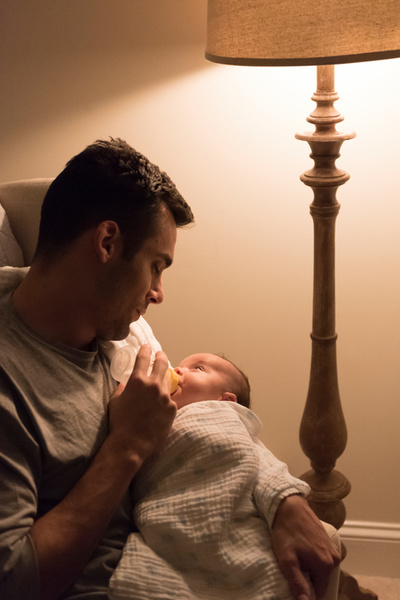
If this arrangement suits all members of your family, practice co-sleeping. This is a real salvation for mothers whose children often wake up at night. Sleep deficiency disrupts the formation of serotonin in the body - a biologically active substance, which is also called the hormone of happiness, calmness and good mood. As a result, a person deprived of normal rest constantly experiences irritability and a feeling of depression
Try to instill a regular sleep-wake schedule in your child. This will make your day more organized and make you less tired.
Attention! Prices for services in different clinics may vary. To clarify the current cost, select a clinic
Clinical Hospital MD GROUPClinical Hospital Lapino-1 "Mother and Child"Children's Clinic KG "Lapino" on New Riga (branch)Clinic "Mother and Child" KuntsevoClinic "Mother and Child" SavelovskayaClinic "Mother and Child" South-WestClinic "Mother and Child" » Novogireevo
All directions
01.






